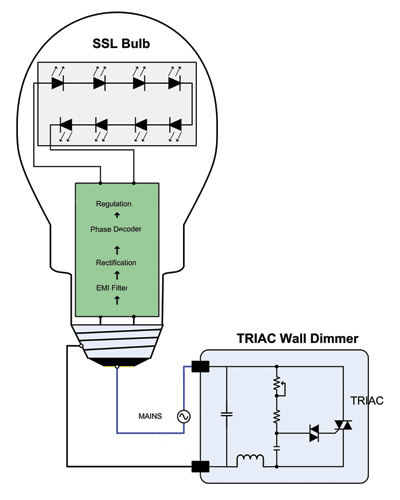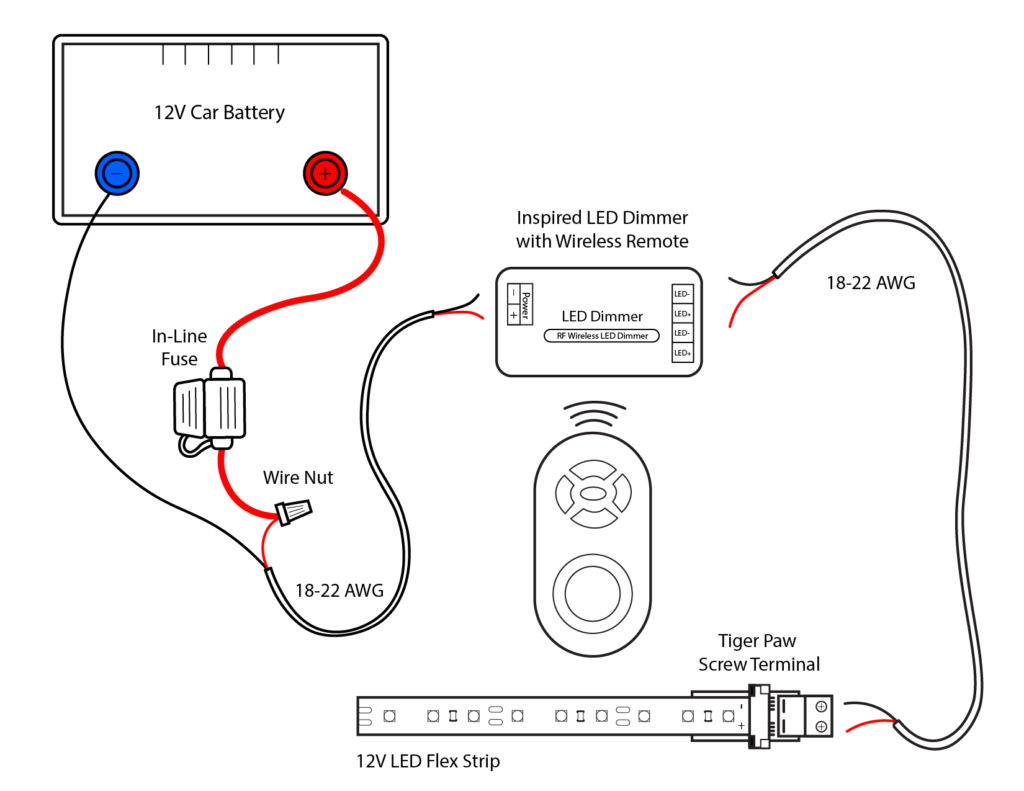Are you interested in knowing how to dim led lights? Are there areas of the room where you would like more light and other areas you might want the lights to be a little dimmer? These days, it seems like every household has some sort of LED light bulb.
The efficiency and lower operating costs alone make them a better choice over standard incandescent bulbs. But that’s not all they have going for them. There are actually several ways to dim LED lights, though where you live may determine which one you have access to.
Table of Contents
How to dim LED lights?
Dimmer switches for LED lights are an inexpensive way to create the effect of ambient light in your home or place of business. The same goes for accent lighting and specific areas you may want to highlight – I used it in my living room to create a warm glow on one side of the room while keeping the other low-lit. Dimming lights also help in a variety of workplace applications, such as reducing glare on computer screens and allowing employees more control over their environment.
Dimming an LED Bulb
Make sure you’re using a dimmable LED light bulb, as most of them are. If you have an older bulb with a diffuser on it, remove it before trying to dim it. There is nothing more frustrating than installing your new dimmable light bulbs and then finding out they don’t dim. That is why we put together our ultimate guide on how to dim lights because we want you to succeed in making your home energy efficient while also saving money.

Make sure that when you’re looking for led lights or equivalent replacements make sure they are labeled as dimmable led bulbs. Once installed make sure that there is no other dimmer switch for that area already installed, if so there should be a symbol next to each switch on which one controls each light fixture.
Dimming LEDs with Thermostats
One of these methods is to dim your LED lights by using a smart thermostat. Although there are no specific products for doing so, a few features can be integrated into a programmable thermostat that will allow you to dim your LED lights. Some brands will come with programs that can automatically turn off your lights or dim them when you leave the house or go to sleep at night.

Although there are many ways to dim LEDs, it’s a good idea to keep in mind how you can incorporate dimming into your everyday life. For example, do you want lights that will turn off and on automatically? Perhaps you want them dim at night but bright during the day. Or perhaps you want them off when no one is home so that it doesn’t appear like someone is there. All of these can be done with smart programs designed for specific brands of smart thermostats.
Dimming LEDs with Timers
If you’re interested in dimming LEDs with a timer, then you can use something called an RC network, which uses a resistor and capacitor. But if you just want to dim an LED without using any resistors or capacitors, then there are ways that you can do it.

One of these is to use a 555 timer, which is one of the most popular ICs. If you want to dim LEDs with a 555 timer, then you can connect it in astable mode. When using a 555 timer in astable mode, remember that for every LED you want to dim, you’ll need two resistors and two capacitors. So for example, if you want to dim three LEDs, then you’ll need six resistors and six capacitors.
How to Incorporate Dimming LEDs in Lighting Design Projects?
We all want our homes, offices and public spaces to be beautifully lit. But how much lighting is enough, how much is too much and how can we make sure it’s as energy-efficient as possible? That’s where LED lights come in. Not only do they create a mood or atmosphere by casting shadows, but they’re also brilliant energy savers. This guide will teach you how easy it is to incorporate dimming LEDs into your lighting design projects!
Whether you’re working on a theater production, or a pop-up restaurant, incorporating dimming LEDs into your lighting design will not only save you energy but can also be used to create light and shadow effects. For example, pendants over dining tables and minimal wall sconces are great ways of creating overhead mood lighting and soft decorative illumination.

The best thing about dimming LEDs is that they’re incredibly versatile. What you can achieve with just a few dimming LEDs will depend on your imagination and creativity. If you want to learn more about how simple it is to incorporate dimming LEDs into your lighting design projects, get in touch with us today!
you can also checkout the pdf guide.
What is the most common way to dim LEDs?
The most common way to dim LEDs is to decrease the voltage going through the LED. There are two ways in which this can be done- by decreasing the input voltage or by decreasing the current flowing through it. If we decrease the input voltage, we will also have to decrease the current flowing through it as well in order for it to stay at a constant brightness.
What type of dimmer switch is needed for LED lights?
Why is it Important to Dim Your LED Lights?
LED lights have become a popular choice for household lighting because they are much more energy-efficient than ordinary old-fashioned light bulbs. However, you should be aware that some LED lights are still not as energy-efficient as they should be.
In fact, some LED lights can use as much as double the power of the same amount of light produced by the old-fashioned bulbs. If you want to make sure that you are using your LED lights efficiently and that they are helping you to save money on your energy bill, make sure to turn your lights off when they are not in use.
Energy-efficient LED lights use significant amounts of energy, consume little power, and last much longer than most other traditional lighting sources. However, improper use of LED lights can cause it to waste energy. It is extremely important to dim your LED lights. Dimming your LED lights is a great way to save money, make your LED lights more energy-efficient and increase LED life span.
Dimming LED lights simply means adjusting the control settings to turn the lights off, on, or to a dimmer setting when they are not in use. This creates the optimal energy-saving setting in your LED lights.
How do you dim LED lights without a dimmer?
The most common solution is to use a three-way light bulb. This type of light bulb has a small filament that can be heated up to produce a bright light. The middle setting on the three-way bulb is usually the brightest and this is usually the setting you want to use if you don’t have a dimmer switch.
If you do have a dimmer switch you can use the two outer settings to vary the brightness of your light. You will find these types of bulbs in most houses that have a way light switch.
Scene switch bulbs
Scene switch bulbs are one of the best ways to control your lights without the need for a dimmer. Scene switch bulbs can be controlled with a remote or by using an app on your phone. The app will allow you to set scenes and schedule them in advance. You can also use Sceneswitch bulbs to turn on and off specific lights when you are away from home.
The Sceneswitch bulb is compatible with most LED light fixtures and it has a lifespan of up to 25,000 hours, which is about 20 years if you use it for 4 hours per day.
Resistor
There are a few ways to dim LED lights without a dimmer. The first one is to use a resistor. If one of the wires from the LED light goes to the negative terminal of the battery, attach a resistor to it. Then, attach the other wire to the positive terminal and then to the resistor. Connect the resistor to both the negative and positive terminals. The resistor will reduce the current so the light will be dimmer.
Light Sensor
The best way to dim LED lights without a dimmer is to use a light sensor. The sensor will measure the ambient light in the room and automatically adjust the amount of light emitted by the lights.
DIY Project
The use of a DIY project to dim LED lights without a dimmer is very useful. It is not only cheaper than buying a new light, but it also saves you the cost of hiring an electrician to install a new dimmer switch.
There are many advantages to this project. For example, it is easy to install and doesn’t require any additional wiring. You can also use this DIY project with any type of LED lightbulb that you want, including those that are already installed in your home.
Related Post: